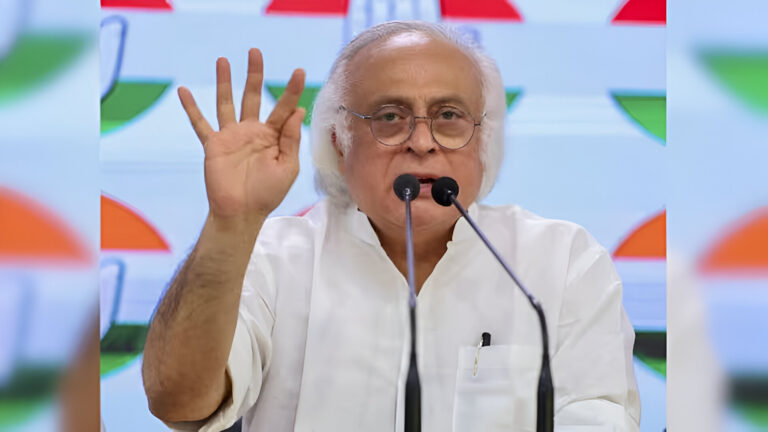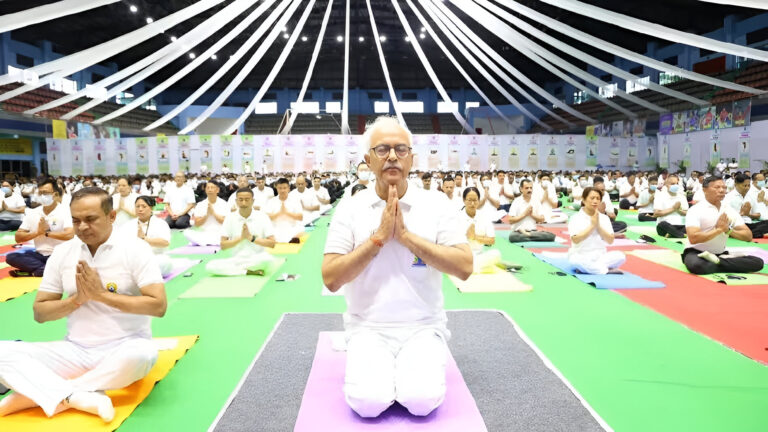Maldives Comes Back to India After Rubbing Shoulders with the Dragon
Summary of the News
After years of aligning more closely with China, the Maldives has signaled a shift back toward strengthening ties with India. This change in foreign policy reflects the island nation’s strategic rethinking as it seeks to balance its relationships between two major regional powers. Under the new leadership of President Mohamed Muizzu, the Maldives is recalibrating its stance, acknowledging the importance of its historic and geographical proximity to India.
Introduction: The Shifting Sands of Maldives’ Foreign Relations
Why Has the Maldives Moved Back Towards India?
For the past decade, the Maldives has been caught in the geopolitical tug-of-war between India and China. While China extended its Belt and Road Initiative (BRI) to the Maldives, resulting in significant Chinese investment and influence, the new government under President Muizzu is rethinking its foreign policy strategy. This marks a critical turn in the Maldives’ international relations as it moves back into India’s orbit.
India has long been a key partner to the Maldives, providing assistance in the form of economic support, security cooperation, and disaster relief. However, the previous government under Abdulla Yameen chose to align more closely with China, accepting substantial Chinese investments that fueled concerns about rising debt and increased Chinese influence in the region. Now, under new leadership, the Maldives is making moves to rebalance its relations, aiming to renew the strong historical ties with India while maintaining a delicate relationship with China.
Historical Context: India and the Maldives’ Relationship
India’s “Neighborhood First” Policy
India has always seen the Maldives as an essential partner in its “Neighborhood First” policy. The two countries share centuries of close cultural, economic, and political ties. For India, the Maldives is of strategic importance because of its location in the Indian Ocean, a vital maritime trade route. As a result, India has been keen to maintain influence in the region to safeguard its security and economic interests.
However, in recent years, China’s growing presence in the Indian Ocean and its increasing investments in the Maldives under its Belt and Road Initiative created tensions between India and the Maldives. China funded several large infrastructure projects in the Maldives, including the Sinamalé Bridge, which connects the capital city Malé to the island of Hulhulé. While these investments were welcomed by some, concerns about the Maldives becoming overly dependent on Chinese loans also grew.
The China Factor: What Was at Stake?
China’s increasing influence in the Maldives raised alarm bells not only in India but also across the region. China’s investments came with high-interest loans that raised fears of a potential “debt trap.” This is a situation where a country becomes so indebted to China that it has no choice but to cede control over key assets or allow Chinese influence over crucial policies.
Under President Yameen, the Maldives adopted a more China-centric foreign policy, which caused a rift with India. India was worried about losing influence in a country that lies so close to its southern borders and forms a key part of its maritime security architecture. As China built ports and other infrastructure projects in the Indian Ocean region, India’s strategic planners feared that China was pursuing a “String of Pearls” strategy, encircling India with a series of naval bases and friendly regimes.
The Shift in the Maldives’ Foreign Policy Under President Muizzu
Balancing Two Giants: India and China
President Mohamed Muizzu’s administration seems intent on recalibrating the Maldives’ foreign policy by balancing relations with both India and China. The Maldives understands the importance of maintaining good relations with India, given its geographic proximity and India’s consistent support over the years.
President Muizzu, while continuing to welcome Chinese investments, is more likely to focus on reducing the Maldives’ dependency on Chinese debt. His government is expected to lean towards India for political stability, economic growth, and security cooperation while continuing to engage China economically. This balancing act is crucial for the Maldives, as it tries to navigate the complex geopolitical landscape of the Indian Ocean.
India’s Role in Regional Stability
India’s role as a regional power and a stabilizing force in South Asia cannot be overlooked. India has consistently supported the Maldives in times of crisis, including during the 1988 coup attempt, when India launched “Operation Cactus” to restore order in the Maldives. More recently, India has provided medical aid and other assistance during the COVID-19 pandemic, further cementing its role as a key partner for the Maldives.
India’s “SAGAR” (Security and Growth for All in the Region) policy reflects its commitment to ensuring the security and prosperity of the Indian Ocean region. The Maldives plays an integral part in this policy, which aims to counter China’s growing influence in the region. India has also been involved in capacity-building efforts in the Maldives, including training Maldivian military personnel and providing technical assistance for maritime security.
Economic Cooperation: What’s on the Horizon?
India’s Investment in the Maldives’ Development
India has been actively involved in several key development projects in the Maldives, including housing, health, education, and transportation. These projects are aimed at improving the quality of life for Maldivians while strengthening bilateral ties.
In recent years, India has committed over $1.4 billion in aid and investments to the Maldives, focusing on infrastructure projects such as roads, bridges, and ports. These projects are expected to generate employment and spur economic growth in the island nation.
Tourism: A Vital Sector for the Maldives
Tourism is the lifeblood of the Maldivian economy, contributing to more than 28% of the country’s GDP. India has consistently been one of the top sources of tourists to the Maldives, and the two countries are looking to further enhance their cooperation in this sector.
With its idyllic white-sand beaches and crystal-clear waters, the Maldives is a dream destination for many Indians, especially honeymooners and vacationers. By increasing connectivity between the two countries and improving tourism infrastructure, both India and the Maldives stand to benefit from the continued growth of the tourism industry.
Security Cooperation: Safeguarding the Indian Ocean
India’s Maritime Interests in the Maldives
The Maldives lies at a strategic point in the Indian Ocean, making it crucial to India’s maritime security interests. Given the increasing threats from piracy, terrorism, and illegal fishing in the region, security cooperation between India and the Maldives is essential for maintaining peace and stability in the Indian Ocean.
India has provided the Maldives with military equipment, surveillance systems, and training programs to bolster its security capabilities. The Indian Navy regularly conducts joint exercises with the Maldivian Coast Guard to enhance interoperability and strengthen maritime security.
Combating Transnational Threats
The Indian Ocean region is not immune to transnational threats such as human trafficking, narcotics smuggling, and terrorism. India and the Maldives have been working closely to combat these challenges, with India providing intelligence-sharing, training, and logistical support to the Maldivian authorities.
By continuing to work together on security issues, both countries can ensure that the Indian Ocean remains a peaceful and secure region, free from external interference.
The Future of India-Maldives Relations
Navigating a Complex Geopolitical Landscape
As the Maldives attempts to strike a balance between India and China, it will need to carefully navigate its relationships with both powers. The key to the Maldives’ success will lie in its ability to leverage its geographic location and maintain strong ties with both countries while avoiding becoming overly dependent on either.
India will continue to play a significant role in the Maldives’ development, providing much-needed economic and security assistance. At the same time, China’s investments in infrastructure projects will remain an important aspect of the Maldives’ economic strategy.
Looking Ahead: Opportunities and Challenges
While the shift in foreign policy under President Muizzu offers new opportunities for India and the Maldives to strengthen their ties, challenges remain. The Maldives must address its growing debt to China and ensure that its development projects are sustainable and beneficial to its people.
As India continues to engage with its neighbors through its “Neighborhood First” and “SAGAR” policies, the Maldives will remain a key partner in the Indian Ocean region. By working together, both countries can foster peace, stability, and prosperity in the region.
FAQs
- Why did the Maldives initially align with China?
Under President Yameen, the Maldives sought Chinese investments for infrastructure development, aligning with China’s Belt and Road Initiative. - What is India’s “Neighborhood First” policy?
India’s “Neighborhood First” policy emphasizes fostering strong relations with its neighboring countries to ensure regional stability and security. - How does the Maldives benefit from Indian investments?
India’s investments in housing, health, education, and infrastructure projects contribute to the Maldives’ development and create employment opportunities. - What role does tourism play in India-Maldives relations?
Tourism is a vital part of the Maldivian economy, with India being one of the top sources of tourists, making cooperation in this sector mutually beneficial. - How are India and the Maldives collaborating on security?
India provides the Maldives with military training, equipment, and maritime security assistance to safeguard the Indian Ocean from piracy and terrorism.


